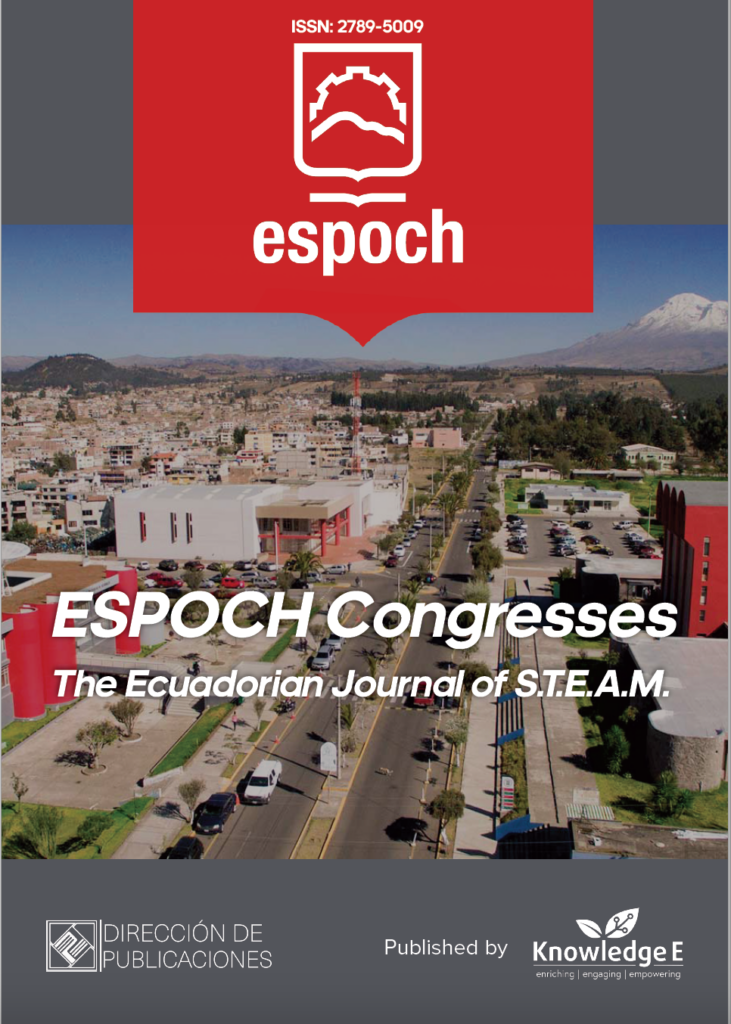
ESPOCH Congresses: The Ecuadorian Journal of S.T.E.A.M.
ISSN: 2789-5009
Leading Ecuadorian research in science, technology, engineering, arts, and mathematics.
Analysis of Automotive Air Conditioning System Performance with Alternative Refrigerants to R-134a
Published date:Sep 25 2024
Journal Title: ESPOCH Congresses: The Ecuadorian Journal of S.T.E.A.M.
Issue title: Volume 3, Issue 4
Pages:72 - 86
Authors:
Abstract:
This work analyzed the performance of the automotive air conditioning system, operating with several alternative refrigerants to R-134a. For this, a thermodynamic model of the automotive vapor compression cycle was implemented to determine the COP of the system, the refrigeration capacity, and the consumption of the compressor. The model considers the compressor rotation speed, ambient temperature, cabin temperature, air speed in the condenser, and volumetric airflow in the evaporator as operating parameters. The refrigerants chosen for the analysis were R-152a, R-1234yf, R-290, R-410A, and R-32. The simulation was carried out with climatic data from the city of Riobamba, and temperatures inside the cabin were measured experimentally. The study shows that the refrigerant R-152a has a COP 10% better than R-134a and could be an alternative for direct replacement of refrigerant. On the other hand, R-1234yf presented a COP 9% lower than that of R-134a, which requires adjustments in the sizing of components to provide the same cooling capacity as R-134a. Finally, R-290, R-410A, and R-32 refrigerants have lower performance and higher compressor consumption.
Keywords: automotive air conditioning, vapor compression cycle, COP, cooling capacity, refrigerants.
Resumen
En este trabajo se analizó el desempeño del sistema de aire acondicionado automotriz operando con varios refrigerantes alternativos al R-134a. Para ello, se implementó un modelo termodinámico del ciclo de compresión de vapor automotriz para determinar el COP del sistema, la capacidad frigorífica y el consumo del compresor. El modelo considera como parámetros de funcionamiento la velocidad de giro del compresor, temperatura ambiente, temperatura del habitáculo, velocidad del aire en el condensador y flujo volumétrico del aire en el evaporador. Los refrigerantes escogidos para el análisis fueron el R-152a, R-1234yf, R-290, R-410A, y el R-32. La simulación se realizó con datos climáticos de la ciudad de Riobamba y temperaturas del interior del habitáculo medidas experimentalmente. El estudio muestra que el refrigerante R-152a presenta un COP 10% mejor que el R-134a, pudiendo ser una alternativa para un remplazo directo de refrigerante. Por otro lado, el R- 1234yf presentó un COP 9% menor que el del R-134a, con lo cual se requieren ajustes en el dimensionamiento de componentes para proporcionar la misma capacidad de refrigeración que el R-134a. Finalmente, los refrigerantes R-290, R-410A y R-32 presentan un menor rendimiento y mayor consumo de compresor.
Palabras Clave: aire acondicionado automotriz, ciclo de compresión de vapor, COP, capacidad frigorífica, refrigerantes.
References:
[1] Alkan A, Kolip A, Hosoz M. Comparación del rendimiento energético y exergético de un sistema de aire acondicionado automotriz experimental que utiliza refrigerantes R1234yf y R134a. J Therm Eng. 2021;7(5):1163–1173. Disponible en: http://dx.doi.org/10.18186/thermal.978014
[2] Belman-Flores JM, Barroso-Maldondao JM, Mendoza-Miranda JM, Gallegos-Muñoz A, Riesco Ávila JM, Rubio-Maya C. Simulación Energética de un Aire Acondicionado Automotriz Trabajando con Refrigerantes R-1234yf y R-134a. Memorias Del XIX Congreso Internacional Anual De La Somim, Pachuca, Hidalgo, México; 2013.
[3] Mendoza JMM, Esbrí JN, Babiloni AM, Flores JMB, Arana JCR, Pérez BP, et al. Evaluación Energética De Los Refrigerantes R1234yf Y R152a COMO ALTERNATIVA AL R134a En Sistemas De Refrigeración. Revista Iberoamericana de Ingeniería Mecánica, 2013;17(2):3-11.
[4] Onan C, Erdem S. R1234yf and R744 as alternatives to R134a at mobile air conditioners. J Energy Syst. 2021;5(4):284–295. Disponible en: http://dx.doi.org/10.30521/jes.949753
[5] Nellis GF, Klein S. Heat transfer. Cambridge, Inglaterra: Cambridge University Press; 2009.
[6] Cuevas C, Declaye S, Lemort V. Experimental characterization of a reversible heat pump for hybrid and electric vehicles. Adv Mech Eng. 2019;11(4):168781401984580. Disponible en: http://dx.doi.org/10.1177/1687814019845806
[7] Cajo TDM. Análisis CFD de la distribución de flujos de aire acondicionado en el interior de un vehículo. [Riobamba]: Escuela Superior Politécnica de Chimborazo; 2022.
[8] ASHRAE. Update on new refrigerants designations and safety classifications [Internet]. 2022 Nov. Disponible en: https://www.ashrae.org/file%20library/technical% 20resources/bookstore/factsheet_ashrae_english_november2022.pdf